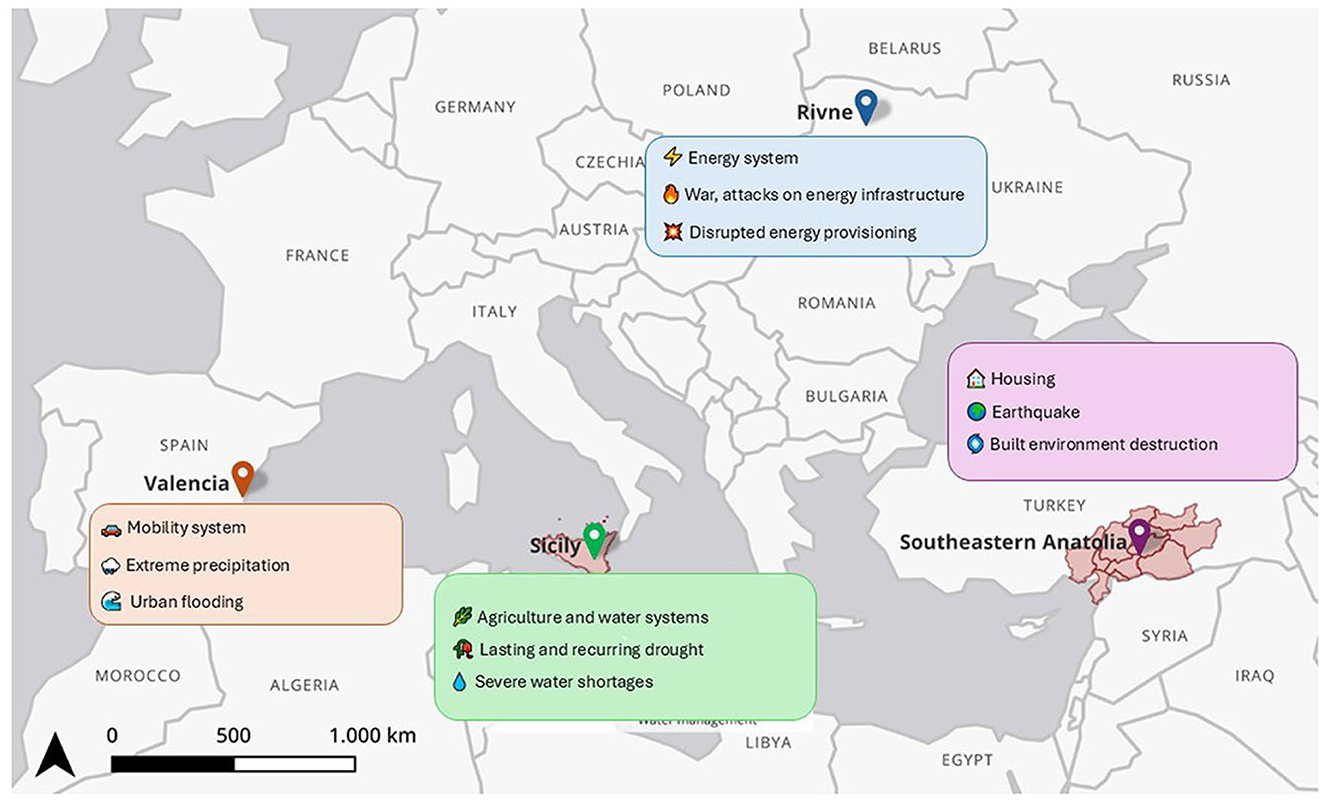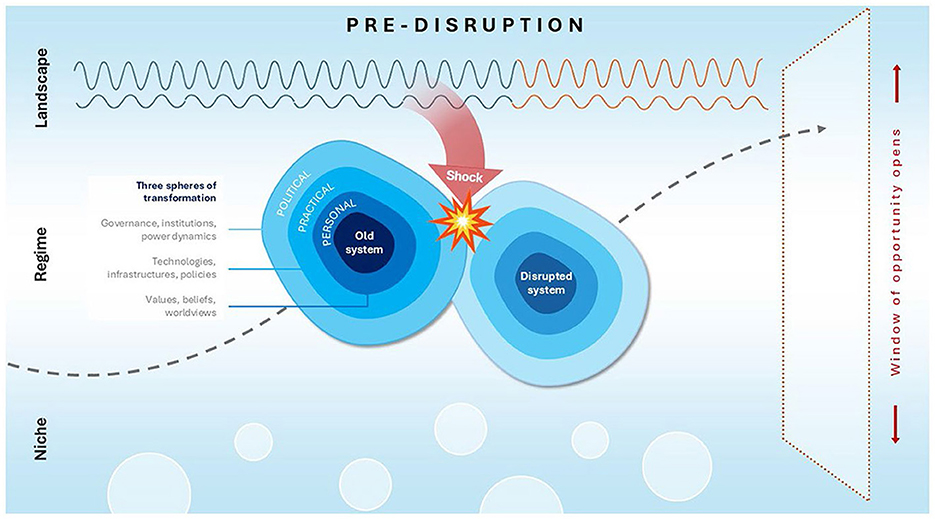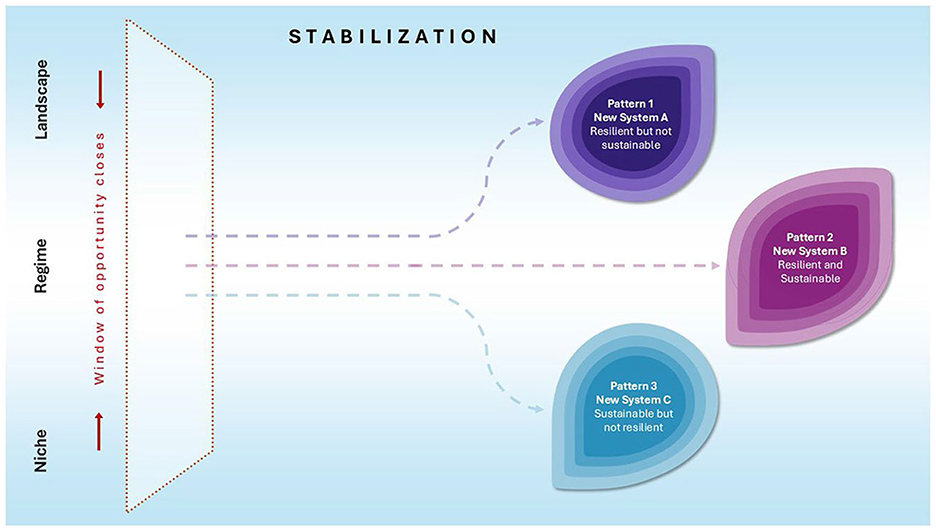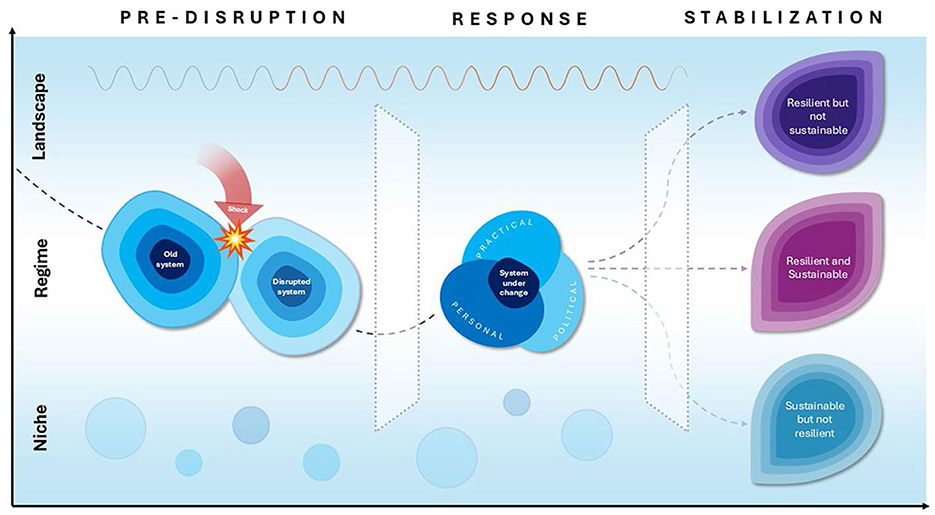by Udovyk, O., Soloviy, V., Blanes, J. P., Nahiduzzaman, K. M., Özdogan, F., Maglione, A. D. and Pennino, S. (2025). Front. Sustain. Cities 7:1656725. doi: 10.3389/frsc.2025.1656725
The captions for all figures were in the wrong order. The order has now been corrected. Additionally, Figure 1 was incorrectly cited instead of Figure 2 in the section Materials and methods, subsection “Disruption and destabilization”, paragraph 1. The correct sentence is “Socio-technical regimes—such as energy, mobility, housing, or food—are stabilized by the interplay of technologies, policies, norms, and institutions (see Figure 2).”
The original version of this article has been updated.
Generative AI statement
Any alternative text (alt text) provided alongside figures in this article has been generated by Frontiers with the support of artificial intelligence and reasonable efforts have been made to ensure accuracy, including review by the authors wherever possible. If you identify any issues, please contact us.
Keywords: transformative recovery, urban, regional, climate, governance, post-disaster, resilience
Citation: Frontiers Production Office (2025) Correction: From “build back the same” to transformative recovery: enablers and barriers for climate-focused pathways in post-disaster case studies across Europe. Front. Sustain. Cities 7:1731573. doi: 10.3389/frsc.2025.1731573
Received: 24 October 2025; Accepted: 24 October 2025;
Published: 07 November 2025.
Approved by:
Frontiers Editorial Office, Frontiers Media SA, SwitzerlandCopyright © 2025 Frontiers Production Office. This is an open-access article distributed under the terms of the Creative Commons Attribution License (CC BY). The use, distribution or reproduction in other forums is permitted, provided the original author(s) and the copyright owner(s) are credited and that the original publication in this journal is cited, in accordance with accepted academic practice. No use, distribution or reproduction is permitted which does not comply with these terms.
*Correspondence: Frontiers Production Office, cHJvZHVjdGlvbi5vZmZpY2VAZnJvbnRpZXJzaW4ub3Jn
 Frontiers Production Office
Frontiers Production Office



